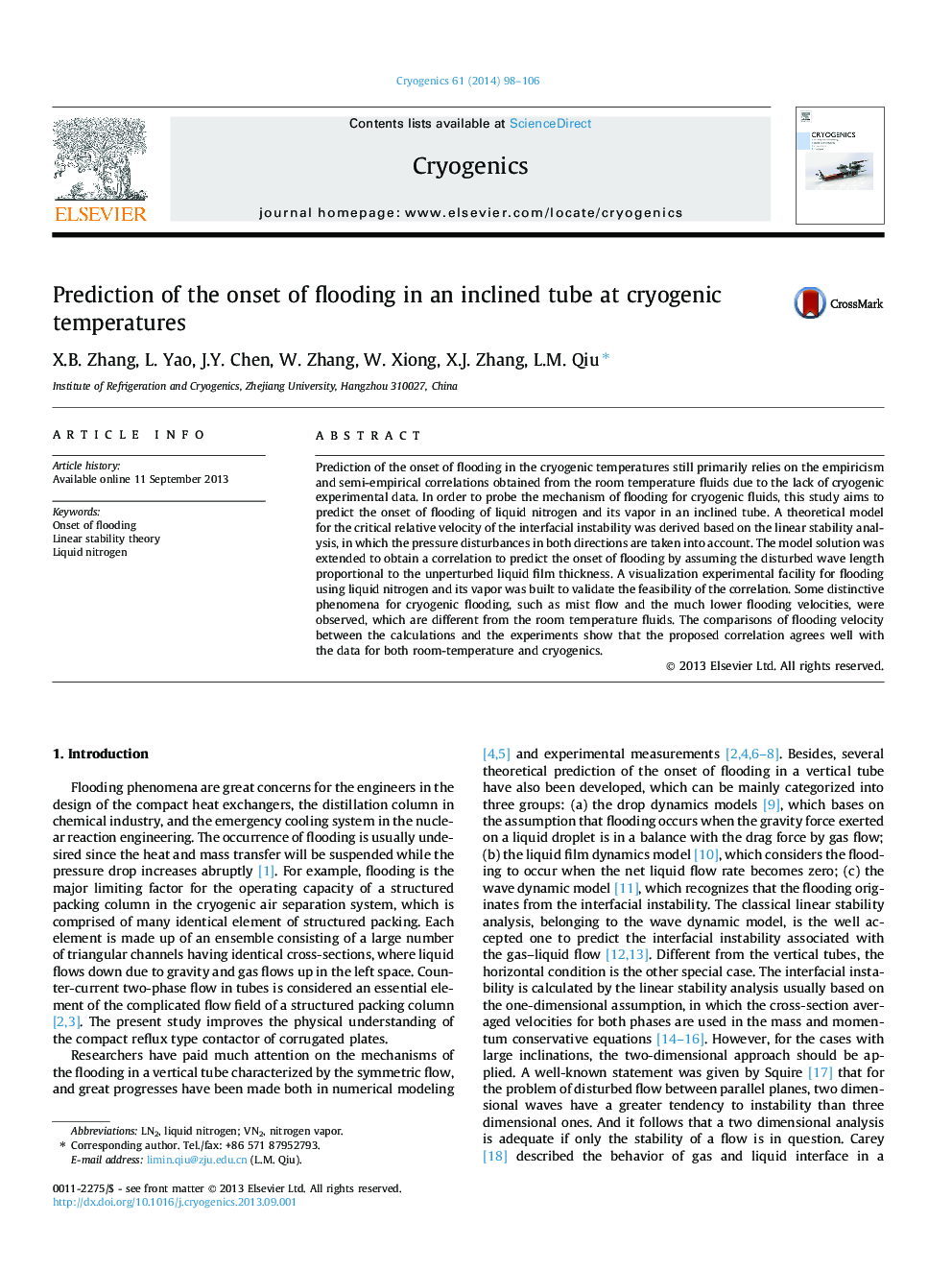| Article ID | Journal | Published Year | Pages | File Type |
|---|---|---|---|---|
| 1507411 | Cryogenics | 2014 | 9 Pages |
Abstract
Prediction of the onset of flooding in the cryogenic temperatures still primarily relies on the empiricism and semi-empirical correlations obtained from the room temperature fluids due to the lack of cryogenic experimental data. In order to probe the mechanism of flooding for cryogenic fluids, this study aims to predict the onset of flooding of liquid nitrogen and its vapor in an inclined tube. A theoretical model for the critical relative velocity of the interfacial instability was derived based on the linear stability analysis, in which the pressure disturbances in both directions are taken into account. The model solution was extended to obtain a correlation to predict the onset of flooding by assuming the disturbed wave length proportional to the unperturbed liquid film thickness. A visualization experimental facility for flooding using liquid nitrogen and its vapor was built to validate the feasibility of the correlation. Some distinctive phenomena for cryogenic flooding, such as mist flow and the much lower flooding velocities, were observed, which are different from the room temperature fluids. The comparisons of flooding velocity between the calculations and the experiments show that the proposed correlation agrees well with the data for both room-temperature and cryogenics.
Related Topics
Physical Sciences and Engineering
Materials Science
Electronic, Optical and Magnetic Materials
Authors
X.B. Zhang, L. Yao, J.Y. Chen, W. Zhang, W. Xiong, X.J. Zhang, L.M. Qiu,
